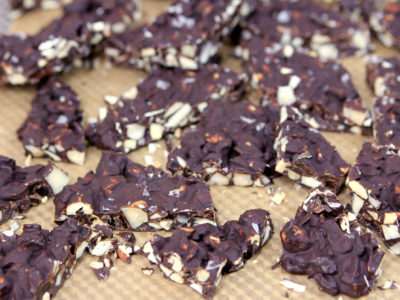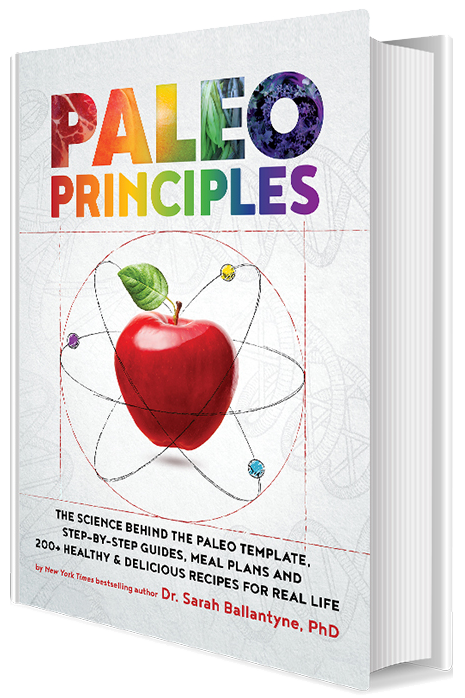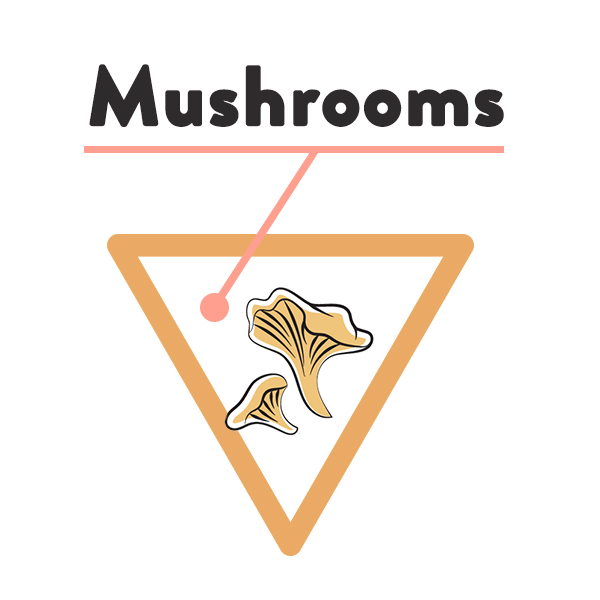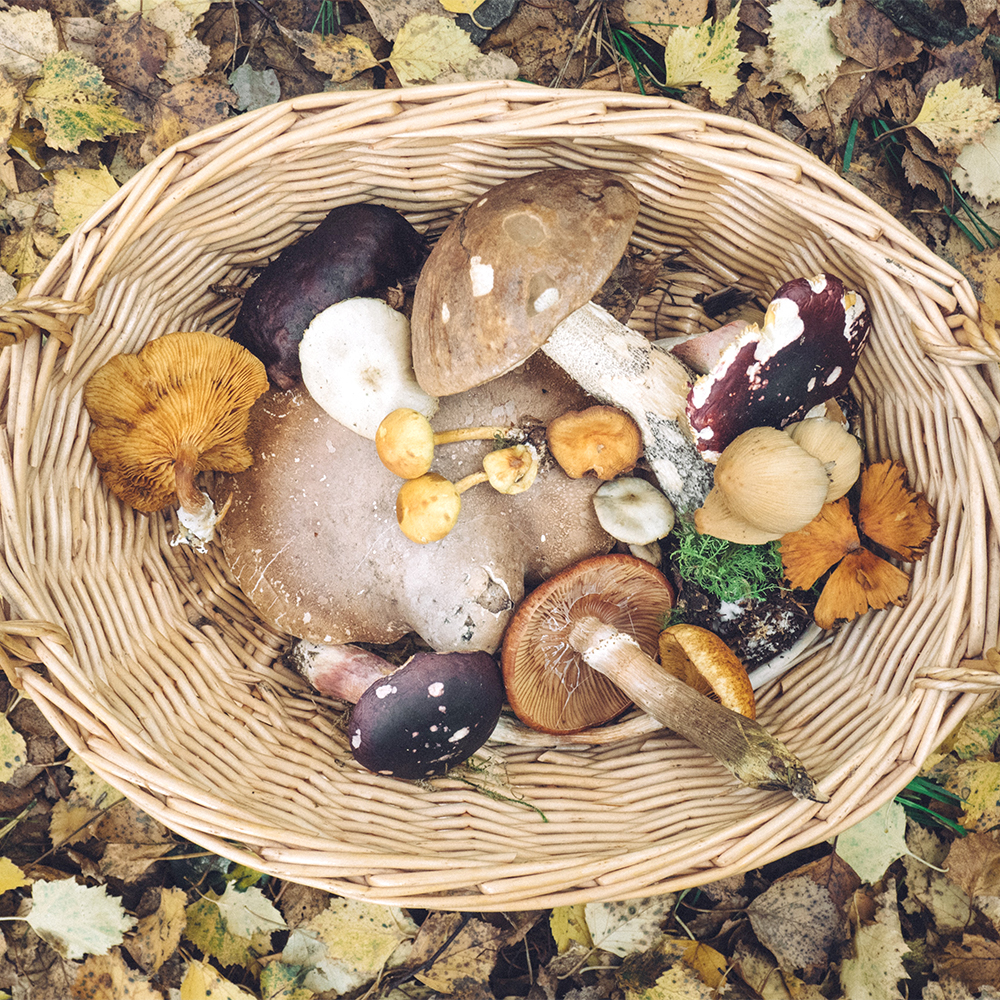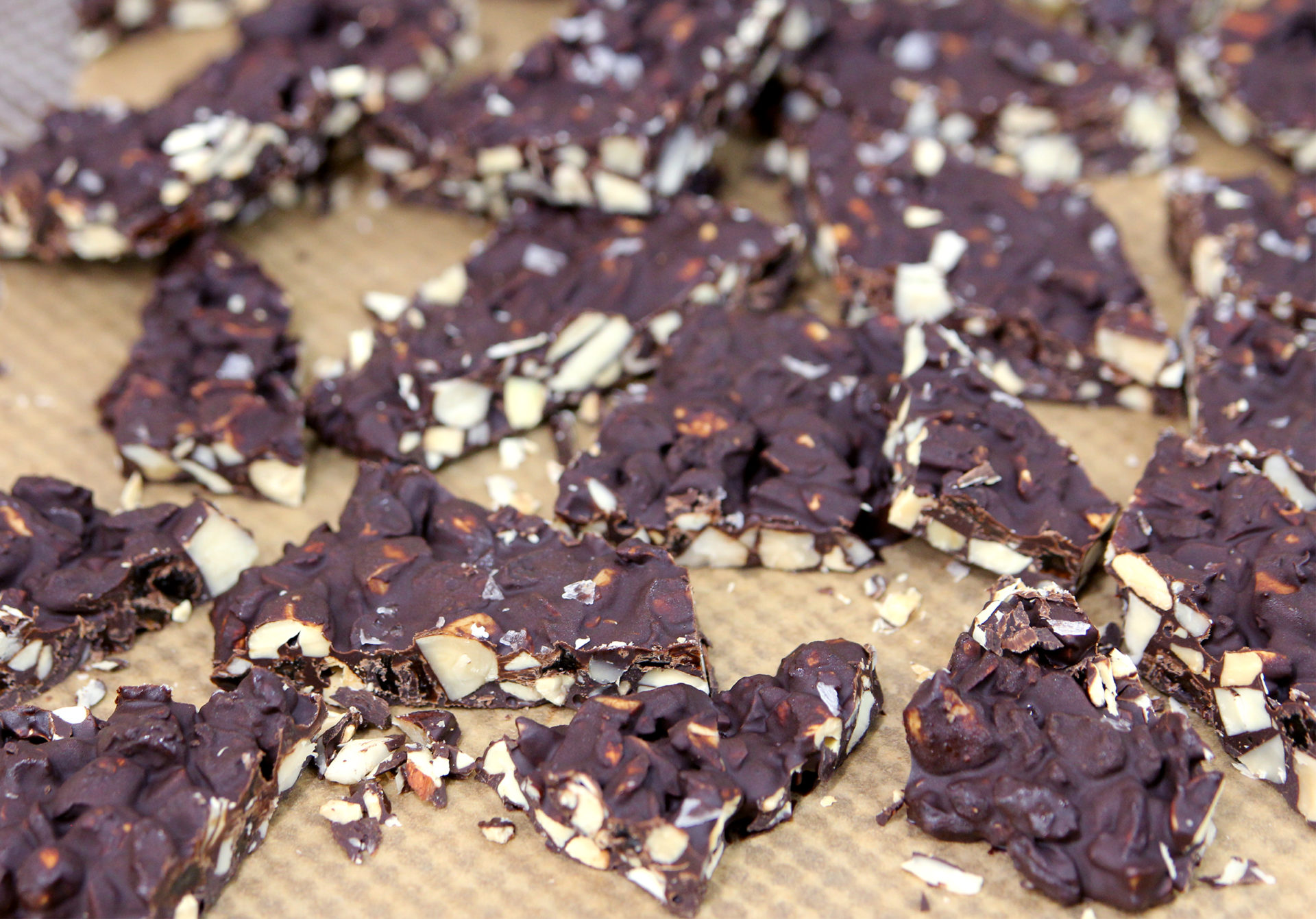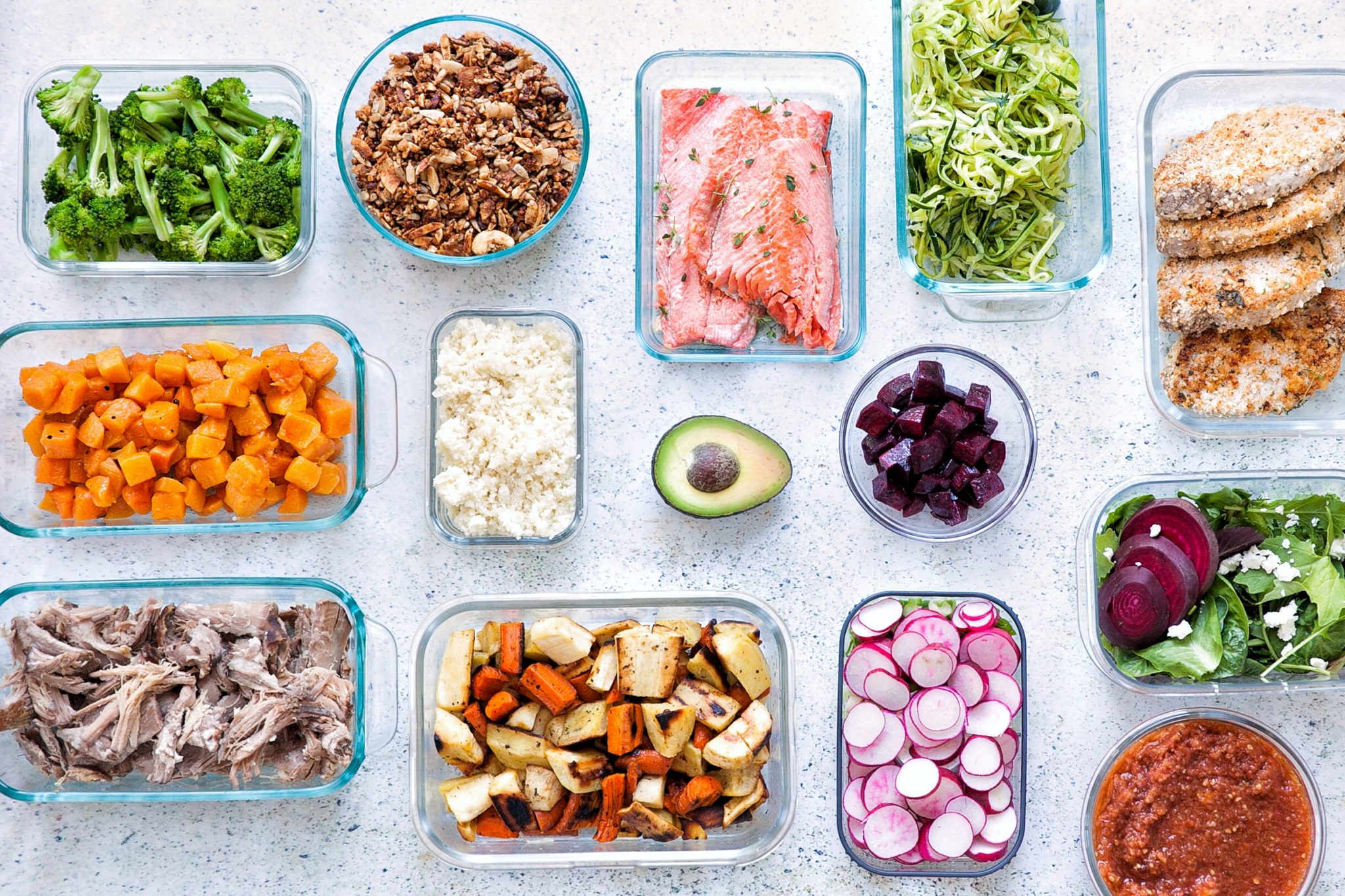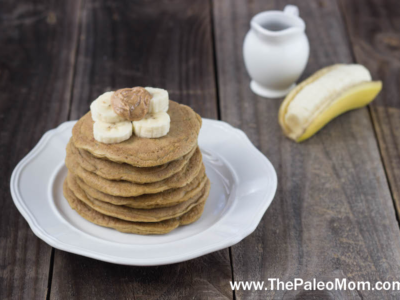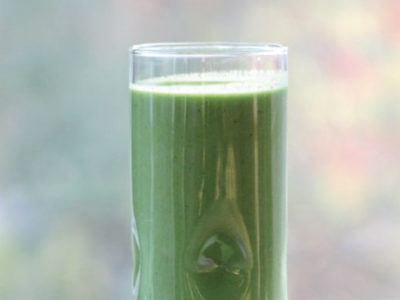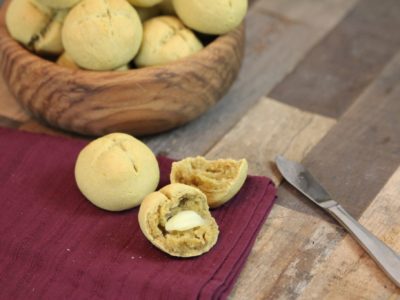This recipe features gut health superfoods, and it’s my favorite way to sneak in medicinal mushroom extracts, whose earthy bitterness pairs so well with chocolate and nuts. In fact, I make this recipe whenever anyone in the house is feeling under the weather, since all of these ingredients support a healthy gut microbiome and immune function!
But, before we get to the recipe, let’s review how the ingredients in this Dark Chocolate Bark benefit gut health (and if you want to get even more nitty gritty detail, check out The Gut Health Guidebook and The Gut Health Cookbook). And, since it’s the uniquely awesome ingredient in this recipe, let’s start with mushroom extracts…
Mushrooms Extract for the Microbiome
Mushrooms are powerhouses of nutrition. A 100-gram serving of the least impressive mushroom (the white or common mushroom), raw, contains a whopping 24% of the RDA of vitamin B2, 18% of vitamin B3, 15% of vitamin B5, 16% of copper, 13% of selenium, 9% each of phosphorous and potassium, and smaller but still impressive amounts of vitamins B1, B6, B9, C and D as well as iron, magnesium, manganese and zinc—all for only 22 calories. (See also Elevating Mushrooms to Food Group Status.) But, their incredibly wide-ranging health benefits are attributable to their unique fiber content and their array of phytonutrients. For example, protocatechuic acid is a potent antioxidant that can protect against liver damage, cardiovascular disease, cancer, ulcers, and bacterial or viral infection; gallic acid can reduce inflammation and possibly help treat depression and infection; gentisic acid has anti-inflammatory, antioxidant, and antirheumatic properties while also protecting cells from gamma radiation; myricetin can help protect against neurodegenerative diseases (like Parkinson’s and Alzheimer’s), glaucoma, liver damage, cardiovascular disease, photoaging, thrombosis, allergies, and hypertension; vanillic acid can act as a pain reliever while also protecting against infection and liver damage; and p-coumaric acid can help regulate the immune system, improve bone density, protect against cancer and kidney damage, and even protect against tissue damage induced by alcohol and drugs. See also The Amazing World of Plant Phytochemicals: Why a diet rich in veggies is so important! and The Power of Medicinal Mushrooms: An Overview.
When it comes to the gut microbiome, mushrooms deliver unique prebiotic fibers that stimulate the growth of beneficial bacteria (see also What Is the Gut Microbiome? And Why Should We Care About It?). Their carbohydrate structure includes chitin, β- and α-glucans, mannans, xylans, galactans, and hemicellulose, which collectively feed a range of bacterial species. Chitin, in particular, is a type of fermentable oligosaccharide fiber found only in a handful of foods (apart from mushrooms, it’s in insect exoskeletons, fish scales, and the shells of crustaceans), and can support the growth of Bifidobacterium, Lactobacillus, Bacteroides, and Akkermansia, while also decreasing levels of potentially harmful Desulfovibrio. Chitin has also been shown to inhibit the destruction of the gut barrier in mice with diet-induced metabolic syndrome, while restoring the Firmicutes to Bacteroidetes ratio and normalizing the gut microbiota. In human fecal culture, chitin-glucan fiber also beneficially increases the Lactobacillus/Enterococcus ratio.
Of course, not all mushrooms are created equal! Each mushroom variety has its own unique nutrient composition and can impact the microbiota in different ways. Although many mushrooms with known medicinal properties have yet to be studied for their effect on the gut (at least 380 species with prebiotic potential fall in this category!), many mushrooms have already demonstrated important effects on the microbiome. These include:
- Reishi (Ganoderma lucidium) contains polysaccharides that can be fermented by Bifidobacteria, and studies using reishi extracts show it can increase the relative abundance of Lactobacillus, Roseburia, and Lachnospiraceae in the gut. Through regulating the gut microbiota, reishi can also inhibit pancreatitis. In mice, these mushrooms have also been reported to reduce obesity through modulation of the gut microbiota. Along with reversing gut dysbiosis in mice (reducing the Firmicutes/Bacteroidetes ratio and lowering levels of endotoxin-releasing Proteobacteria), reishi has been shown to alter the intestinal barrier probity and reduce endotoxemia.
- Chaga (Inonotus obliquus) contains polysaccharides that exert anti-tumor effects in colorectal cancer and that can increase Bacteroidetes at the phylum level, bringing the gut microbial profile closer to a healthy composition.
- Turkey Tail (Coriolus versicolor) contains polysaccharopeptide, which can modify Bifidobacterium and Lactobacillus species and elicit host responses that subsequently regulate the gut microbiome.
- Maitake (Grifola frondosa), also called hen-of-the-woods, contains starch, fructo-oligosaccharides, oligofructoses, lactulose, galactomannan β-glucan, indigestible dextrin, and indigestible polydextrose, giving it potent prebiotic properties and the ability to strongly interact with the immune system. Maitake extracts also have antimicrobial activity against hepatitis B virus, herpes simplex virus type 1, and influenza A/Aichi/2/68 virus.
- Shiitake (Lentinula edodes) polysaccharides can alter the spatial structure of rodent gut microbiomes, altering levels of a wide range of bacterial populations including Proteobacteria, Acidifcaciens, Helicobacter suncus, Bacteroides, and Alistipes.
These just happen to be the five medicinal mushrooms extracts in Real Mushrooms 5 Defenders Organic Mushroom Complex includes top-quality extracts from all five of the above mushrooms! Real Mushrooms make (IMO) the highest possible quality medicinal mushroom extracts. The mushrooms are wild-harvested, organic and sustainably-sourced and you’ll always find a measurement of beta-glucans and triterpenoids (where applicable) on their labels. Plus, all of the products are free of starch, grain and fillers (surprisingly common in mushroom extracts). They make powders that are easy to add to coffee, a smoothie, or in the Dark Chocolate Bark recipe below, but you can also get capsules that make getting your daily serving of mushroom super easy.
What about the other ingredients?
Chocolate for the Microbiome
Lucky for chocolate lovers like me, the scientific literature supports a role for chocolate consumption for human health, including reducing risk for cardiovascular disease, diabetes, and even some cancers. Chocolate legitimately helps reduce parameters of stress, supports maintenance of a healthy body weight, and improves cognitive performance. These protective effects of chocolate may be due to its phytochemical content and its stearic acid (which may help reduce diastolic blood pressure).
Some of these well-publicized health benefits of chocolate are due to the way its flavanols (especially catechin and epicatechin oligomers) interact with the gut microbiota. In a randomized, controlled, double-blind crossover trial, researchers tested the consumption of either high-cocoa flavanol drink (494 milligrams cocoa flavanols per day for four weeks) or low-cocoa flavanol drink (23 milligrams per day for four weeks) in 22 volunteers. The high cocoa flavanol drink led to a significant increase in Bifidobacterium and Lactobacillus levels, while also significantly decreasing Clostridium counts; at the same time, triglyceride and C-reactive protein levels dropped significantly (with the changes in C-reactive protein closely linked to changes in Lactobacillus counts). These results suggest that the flavanols in cocoa can promote the growth of beneficial probiotics, while also improving some biomarkers. In rats, cocoa feeding resulted in a decreased proportion of Bacteroides, Clostridium, and Staphylococcus genera.
Raisins and Cranberries for the Microbiome
Raisins are packed with fiber and phytochemicals, and also contain some iron, potassium, phosphorus, copper, and manganese. These sweet treats are made by allowing grapes (typically Thompson seedless) to dry in the sun, oxidizing and caramelizing the fruit’s natural sugars in the process and resulting in the characteristic dark brown or black color. Studies have showed that among different snack foods, raisins are associated with lower fasting blood sugar, lower postprandial glucose levels, and lower systolic blood pressure; other research suggests they can lower LDL cholesterol, triglycerides, and oxidized LDL levels. Raisins have also been shown to have antimicrobial activity against some oral pathogens (meaning they can potentially help protect against cavities and gum disease, despite being relatively high in sugar!); more specifically, they contain oleanic acid that inhibits Streptococcus mutans and Porphyromonas gingivalis. They also can positively impact the gut microbiota, with some research showing raisins enhance the growth of Faecalibacterium, Bacteroidetes, and Ruminococcus, while decreasing some members of Klebsiella, Prevotella, and Bifidobacterium.
And if you opt for half cranberries, that’s great too! Bioactive berry compounds selectively inhibit certain pathogenic bacteria, especially Staphylococcus; Salmonella and Escherichia strains are also sensitive to some berry strains. One study showed that cranberries inhibited Listeria and Staphylococcus growth. See also The Health Benefits of Berries.
Olive Oil for the Microbiome
Olive oil is consistently linked with health benefits, including reducing cardiovascular disease risk (including both heart disease and stroke), reducing Alzheimer’s disease risk (more research is needed), reducing cancer risk (more studies are needed), improving blood sugar regulation and insulin sensitivity, reducing likelihood of weight gain (and maybe even aid in weight loss), reduce reducing joint pain and swelling in rheumatoid arthritis, and generally reduce markers of inflammation (like C-reactive protein). These benefits are attributable to its high content of the monounsaturated omega-9 fatty acid, oleic acid, making up 55 to 83% of olive oil, and the fact that high-quality olive oil is very rich in at least 30 phenolic compounds with antioxidant activity—particularly oleuropein, hydroxytyrosol, tyrosol—as well as alpha-tocopherol, an important form of vitamin E.
Many of the health benefits associated with olive oil are related to its effects on the gut microbiome. A recent mouse study tested the effects of several three-month-long diets with different fat compositions: one with 38% of calories from extra virgin olive oil, one with 38% of calories from refined olive oil, one with 38% of calories from butter, and one with a standard low-fat chow. At the end of the study period, the extra virgin olive oil resulted in the most favorable microbial profile (significantly different than that of butter, which resembled the microbiota composition seen in obese individuals). The refined olive oil resulted in intermediate changes to the microbiota (different than butter, but less dramatically so than extra virgin olive oil), suggesting that olive oil is beneficial not only due to its fat composition, but also due to the polyphenols present in extra virgin varieties. This has been confirmed in several additional studies, showing that extra virgin olive oil leads to a more diverse gut microbiome, supporting the growth of probiotic bacteria that are linked to improved insulin and leptin regulation as well as a healthier metabolism.
Olive oil also contains lignin, a type of fiber with lots of branches made of phenols. It can be metabolized by the gut microbiota into various bioactive metabolites, such as enterolignan. Only small quantities of phenols are absorbed by the small intestine, and the remainder pass into the colon where they can inhibit the growth of Bacteroides species, Clostridium species, Escherichia coli, and Salmonella typhimurium due to their antimicrobial properties. See also TPV Podcast, Episode 326: The Olive Oil-cast! and TWV Podcast Episode 414: Best Cooking Fats for Gut Health
Nuts for the Microbiome
And last but not least, nuts. Not surprisingly, nuts and seeds have been associated with lower rates of a variety of chronic diseases and all-cause mortality. In a study of adults at high risk of cardiovascular disease, eating more than three servings of nuts per week resulted in a 39% reduced risk of death from all causes. Nut consumption is also associated with lower body mass index, lower waist circumference, and lower occurrence of type 2 diabetes. In a meta-analysis encompassing 354,933 total participants, one serving of nuts per day was associated with a 27% reduced risk of all-cause mortality and a 39% reduced risk of cardiovascular disease mortality, and the highest nut consumers saw a 14% reduced risk of cancer mortality. For all-cause mortality and cardiovascular disease death, even a single serving of nuts per week was enough to lower the risk by 4% and 7%, respectively. Additional research has shown nut consumption to be associated with lower risk of mortality from respiratory diseases (52% reduced risk), neurodegenerative disease (35% reduced risk), infectious disease (75% reduced risk), and kidney disease (73%).
Nuts and seeds contain a wealth of gut-friendly components, including their fatty acids, fiber, micronutrients, polyphenols, and other phytochemicals! The main prebiotic nut compounds include polymerized polyphenols (particularly ellagitannins and proanthocyanidins, which can enhance levels of Bifidobacterium and reduce enterobacteria) and fiber (which can spur the growth of Bifidobacterium and Lactobacillus and increase the production of butyrate). See also Nuts and the Paleo Diet: Moderation is Key and TWV Podcast Episode 413: The Gut Health Benefits of Nuts.
All this awesome science to say: You call feel good about eating a piece of this Dark Chocolate Bark and know that the ingredients are health-promoting and will nourish beneficial gut microbes too!
Dark Chocolate Bark with Mushroom Extract
Prep time: 15 minutes, plus 1 hour chill time
Cook time: 6 minutes
Yield: 18-20 pieces
Ingredients:
- ½ cup Brazil nuts
- ½ cup almonds
- ½ cup cashews
- 9 ounces bittersweet chocolate
- 1 tablespoon extra virgin olive oil
- ⅓ cup mushroom extract (e.g., chaga, reishi, turkeytail, cordyceps, maitake, lion’s mane, etc.)
- ¾ cups raisins (or half and half raisins and dried cranberries)
- ½ teaspoon Maldon sea salt (optional)
Directions:
- Preheat oven to 350°F.
- Roughly chop the Brazil nuts, almonds and cashews (the largest pieces will determine the thickness of the bark) and place or a rimmed baking sheet. Bake to lightly toast, for 5 to 7 minutes, giving the baking sheet a shake every couple of minutes (watch carefully since they can burn quickly).
- Melt the chocolate and olive oil over a double boiler or in the microwave on medium power. Stir in the mushroom extract until completely smooth and fully combined.
- Line a rimmed baking sheet with parchment paper, wax paper, or a silicone baking mat.
- Mix the chopped nuts and raisins into melted chocolate. Pour onto the prepared baking sheet and spread to ¼- to ⅜-inch thick. Sprinkle the salt over the top, if using.
- Refrigerate until chocolate bark is cold and hard. Remove from the fridge and cut into pieces (however big or small you like). Store in an airtight container in the fridge for up to a month.
Tip: The bitter earthy flavor of the mushroom extract is masked by the sweetness of semisweet chocolate. However, some mushroom extracts, like reishi, are extremely bitter. If you’re worried the bark won’t be sweet enough, add the mushroom extract a teaspoon at a time, tasting to make sure the sweet taste still comes through. The finished bark should taste as though it’s made with 80% to 90% dark chocolate. My preference is to use Real Mushrooms 5 Defenders for this recipe.
If you’re interested in learning more about gut health superfoods, check out The Gut Health Guidebook and The Gut Health Cookbook.

